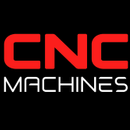The Evolution and Impact of Mass Production: From Historical Milestones to Modern Innovations

The Evolution and Impact of Mass Production: From Historical Milestones to Modern Innovations
Introduction to Mass Production
Mass production, the manufacturing process of producing large quantities of standardized products, has significantly shaped the industrial landscape. This method emphasizes the efficiency of production through the use of assembly lines, automation, and advanced technologies, enabling products to be created at unprecedented scales and speeds.
The History of Mass Production
The concept of mass production traces its roots back to the 1800s during the Industrial Revolution. It was Eli Whitney who introduced the idea of using interchangeable parts during the manufacturing of muskets for the U.S. government. This concept was a precursor to more advanced forms of mass production.
Timeline of Mass Production with CNC Machines
- 1952: The introduction of the first CNC (Computer Numerical Control) machine by John T. Parsons marked a significant shift in mass production, allowing for precise control over machining tools via a programmed computer.
- 1970s: Widespread adoption of CNC technology in manufacturing plants, enhancing both the speed and precision of production lines.
- 1980s to Present: Integration of digital technologies, including CAD (Computer-Aided Design) and CAM (Computer-Aided Manufacturing), further revolutionized mass production, leading to even greater efficiency and flexibility.
Benefits of Mass Production
Economies of Scale
Mass production significantly reduces the cost per unit, making products more affordable and accessible to a broader market.
Consistency and Quality
Automated processes ensure that each product is built to the same specifications and standards, reducing the likelihood of defects.
Increased Efficiency
The use of assembly lines and automation speeds up production, allowing for more products to be made in less time.
Disadvantages of Mass Production with Today's Technological Advancements
Environmental Impact
Mass production often involves significant resource consumption and waste production, contributing to environmental degradation.
Loss of Craftsmanship
The focus on uniformity can diminish the uniqueness and quality associated with artisanal or handcrafted items.
Labor Issues
Automation and robotics, while improving efficiency, can lead to job displacement and ethical concerns regarding worker treatment and employment opportunities.
Greatest Innovations in Mass Production
Robotics and Automation
The use of robots in production lines has dramatically increased speed, efficiency, and safety.
Lean Manufacturing
This methodology focuses on minimizing waste within manufacturing systems while maximizing productivity.
3D Printing
Also known as additive manufacturing, 3D printing allows for rapid prototyping and the efficient production of complex designs that would be impossible with traditional methods.
Leading Companies in Mass Production
Several global giants dominate the mass production landscape:
- Toyota: Renowned for its revolutionary Toyota Production System, which integrates lean manufacturing principles.
- General Electric: A leader in the mass production of appliances, engines, and various other industrial products.
- Apple Inc.: Known for its highly efficient supply chain and mass production capabilities in electronics.
Measuring Total Output in Mass Production
Overall Equipment Effectiveness (OEE)
This key performance indicator measures the percentage of manufacturing time that is truly productive. It incorporates availability, performance, and quality for a holistic view of production efficiency.
Throughput
This measures the amount of product a company can produce and sell over a specific period.
Yield Rates
The percentage of products that meet quality standards compared to the total number of units produced.
Conclusion
Mass production has evolved significantly since its inception, driven by technological advances and the need for efficiency and scalability in manufacturing. While it offers numerous benefits, such as lower costs and consistent quality, it also presents challenges, including environmental concerns and the impact on labor. Understanding these dynamics is crucial for companies looking to optimize their production processes and for consumers aiming to make informed choices in a rapidly changing industrial world.


